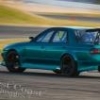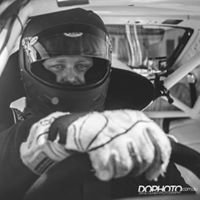R32 GTR Fast Road/Track Alignment
Announcements
-
Similar Content
-
Latest Posts
-
Hmm. Was quite a few years ago now. I think I bought from a crowd in the US called CDT Audio. The speaker is the HD-6. The HD-6CF would have been the better option (based on T-S parameters), but they were discontinued in 4 ohm at that point in time. The HD-6 is a better driver in almost every other way (than the CF) - just not as good in IB. They still do the HD-6. They might even have a more suitable (for IB) option here.https://www.cdtaudio.com/cdtnew22/products/components/woofers/midwoofers/midwoofers.htm But, here's the rub. I was working in the US a lot back then, so I got them delivered to my US office and then just brought them back to OZ myself. I don't know if they will ship to OZ, and it probably wouldn't be great cost-wise anyway. As to results. They're driven direct off the rear channels of my headunit, because the headunit can be setup to run the rears as subs. So, not a lot of power being fed there. Nevertheless, there's no shortage of volume - the sub levels don't need or want to be boosted at all. The bass is definitely not what you would call "tight". It is definitely a bit delayed compared to a proper sub. But, with the great front soundstage and really good 6.5" woofers in the front doors, I'm getting most of the bass detail from the front and the rear is really only to extend the bottom end a bit. Works for what I'm doing. I mean - until recently you couldn't really hold a conversation in my car due to the fuel pump, and for many years I had tyres so noisy (Kumho KU36 at <50 tread depth) that I had to drive with earplugs anyway!
-
curious to know what drivers you chose and the results? quik mafs, says two 6.5s should roughly equate somewhere between a single 8" or 10" driver. i agree that IB is definitely the way to go in most cars imo.
-
By Dose Pipe Sutututu · Posted
S13 and R32 rear suspension geometry is horrible once you lower it (which everyone does). The camber & toe out ramp is very aggressive, hence it's common for the S13 boys/girls to use a S14 or S15 subframe as the geometry is light years ahead. I'm sure the same can be done on R32s, but I don't know anyone that has done that. -
Well, of course there's something wrong with the suspension. It was like that when it came out of the factory. Nissan wanted it to ride at least 50mm higher than most of us. They wanted it to be comfortable enough that the press and user reviews didn't complain about fillings being knocked out of teeth. The marketing people wanted to be able to talk about their fantastic new 4WS system (even if it was a pointless exercise, ha! pointless! Do you see what I did there? no? oh well. too bad). There weren't any semi-slicks or semi-semi-slicks or 18" wheels. Laser pointers didn't exist, so you couldn't easily build a bump steer gauge. There wasn't any better technology for suspension bushes than squishy shit in a condom. The list goes on.
-
By joshuaho96 · Posted
I personally recommend not messing with factory suspension until you can clearly identify something wrong. For example I think the R33 might need some way to adjust front camber because I feathered the edges of the tires much more than the center of the tread doing some figure 8s and slalom.
-







Recommended Posts
Create an account or sign in to comment
You need to be a member in order to leave a comment
Create an account
Sign up for a new account in our community. It's easy!
Register a new accountSign in
Already have an account? Sign in here.
Sign In Now